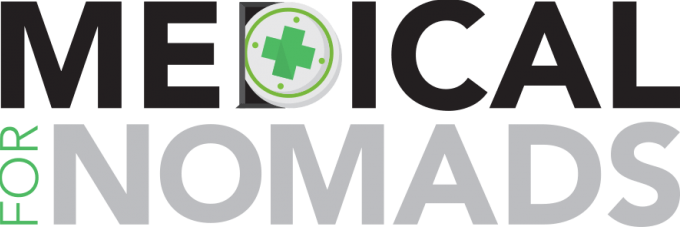How Much Does Medical Insurance Cost In 2023?
Specialist breakdown of the medical insurances costs.
In a world where healthcare expenses are skyrocketing, knowing the ins and outs of medical insurance costs isn’t just smart—it’s absolutely essential.
Whether you’re a remote worker toggling between time zones or a busy business professional on the move, securing the right health insurance is extremely important.
Hey, someone has to break down the financial jargon and spill the real tea on how much medical insurance actually costs, and who better to do it than yours truly?
With years of grinding in the insurance labyrinth, believe me, I’ve heard all the questions, all the complaints, and all the misconceptions about medical insurance.
“Is it worth the premium cost?”
“Are there any affordable options?”
“Where can I buy medical insurance?”
Sounds familiar, doesn’t it?
That’s where I swoop in with my expertise. In this blog post, I’m going to give you the lowdown on how much medical insurance will cost in 2023, drawing from my extensive research and industry experience.
You’re in luck stumbling upon this blog because I’ll be tackling this topic with the same depth and clarity as if you were sitting across from me, seeking expert advice on the costs of medical insurance.
So, buckle up, because it’s my absolute goal to provide you with the real costs of staying healthy and insured in 2023.
And hey, let’s face it:
If the cost of health insurance was easy to understand, I’d be out of a job! 😅 But it’s not, so here we are. Let’s dive in.
P.S. If you want to know the best medical insurance then read my latest blog, also if you are ready to get an instant quote, don’t hesitate to jump to my site and go through the process in under 60 seconds.
Brief overview of the cost of medical insurance
After the global disruptions we’ve witnessed, including a pandemic and the rise of remote work, the importance of comprehensive medical insurance has escalated significantly. Now more than ever, it’s crucial to understand the costs involved to make an informed decision.
According to a recent study conducted by the Kaiser Family Foundation (KFF), the average once-a-year payment for employer-sponsored health insurance in 2022 was $7,911 for single coverage and $22,463 for family coverage. Can you believe that!
The cost varies based on factors like your age, pre-existing medical conditions, and the scope of cover you desire. And let’s not forget, the kind of globetrotting you indulge in adds its own twist.
If you’re parachuting in New Zealand this weekend and spearfishing in Bali the next, you might be looking at a different premium than someone who’s operating from a co-working space in Berlin.
But what does this mean for you guys? Well, we know that the landscape of health insurance has changed, but here’s how it’s likely to impact you:

Specialised plans for different types of people
What do I mean by this? Well, for example, insurance companies are now offering tailored plans to cater to digital nomads (we can put our hands up here 😉). While these may sound ideal, the costs can vary substantially.
Of course, this is something that we offer. Prices are totally tailored towards what you need and we have freedom on what packages you can choose for coverage. We will always break down the price to provide the most competitive one we can offer.
Short coverage for frequent overseas flyers
For those who find themselves frequently flying for work, multi-trip plans are worth considering. Prices generally range quite a lot per year but pay close attention to the terms—specifically limitations and exclusions.
Of course, at any time the cost of this medical insurance can increase or decrease based on external factors, and your history or the location of the country you are visiting.
Premium plans for entrepreneurs on the move
Business owners in need of robust global coverage should anticipate higher costs. I know, it’s frustrating but essentially you are on the move a lot and could be seen as more prone than others.
For a lot of entrepreneurs, putting health first is a no-brainer. Also getting access to premium is a plus, skipping the stress of having to make long claims, and talking with hospitals and other areas that might waste their time.
So, to summarise, the cost of medical insurance is actually a very variable thing. As we can see above, depending on who and what you are, the cost of your health insurance will change.
Explanation of premium, deductible, and out-of-pocket costs
Ah, the unholy trinity of health insurance jargon: Premium, Deductible, and Out-of-Pocket Costs. It’s as if they were created to make your life confusing, isn’t it? Fear not, because I’m here to translate this so it makes more sense for you.
I’m going to briefly explain each of these in more detail so you won’t have any confusion when picking the best option for yourself.
What does premium coverage mean?
A premium is the amount of money you pay to your insurance company on a regular basis (usually monthly) to maintain your health insurance coverage.
It is a fixed cost that you must pay regardless of whether you use any healthcare services or not. It’s what you pay to keep your insurance active. You can usually choose to pay via different plans like monthly, quarterly and yearly.
This is important for nomads and travellers who want peace of mind knowing they are covered completely. If anything happens, you know you are secure.
What is the ‘deductible’?
A deductible is the amount of money you must pay out of pocket for covered medical services before your insurance starts to pay.
For example, if you have a $1,000 deductible, you will need to pay $1,000 towards your healthcare expenses before your insurance coverage begins.
However, some preventative services may be exempt from the deductible and covered at no cost to you. It’s important to know if any of these exist in your medical insurance, and if they add any extra costs to your total fee.
So, make sure when you are buying insurance that you know how much deductible you will be paying so you are not in for a nasty shock if you ever need to use your insurance.
What are out-of-pocket costs?
Once you have met your deductible, you may still have additional out-of-pocket costs. These can include co-payments, co-insurance, and any other cost-sharing between you and your insurance company.
Co-payments are fixed amounts you pay for certain services such as $20 for a doctor’s visit.
Once you reach your maximum out-of-pocket limit, your insurance typically covers 100% of the remaining costs for covered services. Again, if you tend to have lower out of pocket costs this may mean that the cost of your healthcare may increase.

Five factors that influence how much your health insurance will cost
1. Age
As the years stack up, so does the cost of your health insurance premium. Hate to break it to you, but turning 30 (or 40, or 50) doesn’t just mean a new box to tick off in the age bracket on forms—it could also mean an increase in how much you shell out for health coverage.
Simply put, the older you are, the more medical care you will probably need. This is why most insurance plans increase their price.
For example, a 55-year-old may pay nearly twice as much as a 30-year-old for medical insurance. Insurance companies view age through a lens of risk; older folks statistically require more medical attention.
The good news is that understanding how age affects your premium prepares you for the inevitable. This way, you can plan and budget better. You might also find age-specific discounts or packages—yes, they exist!
2. Level of coverage
When it comes to the cost of your medical insurance, the level of coverage you opt for is a big deal. Think of it like choosing between economy and first-class airline seats; the experiences aren’t the same, and neither is the price tag.
Basic plans are your no-frills option. They cover the essential medical services and are less of a hit to your wallet upfront. On the other end, you’ve got the comprehensive plans, your all-you-can-eat buffet of health services.
While these come with a higher price tag, they also offer more extensive coverage options. So, the more comprehensive the coverage, the higher the insurance premiums typically are.
You’d be surprised how many people get tripped up by not reading the terms. Check if there are any restrictions on pre-existing conditions or limits on treatments. Sometimes what looks like a bargain can turn into a financial headache later on.
Usually, it’s broken down into three or four different plans such as bronze, silver, gold, or platinum. For this example, bronze would have the most basic coverage plan whereas platinum would be the most comprehensive option.
So, the more coverage, the higher the cost of your health insurance will likely be.
3. Pre-existing conditions
From an insurer’s point of view, pre-existing conditions like diabetes, heart disease, or even chronic back pain represent risk. The likelihood of you needing medical treatment is higher, which means they could end up paying more in claims.
So, if you have any pre-existing medical conditions some insurance plans won’t cover them. This is why it’s important to check if they do to avoid having to spend a lot of extra money.
However, it’s not all doom and gloom. Some insurers specialise in covering people with pre-existing conditions, albeit at a higher price. Also, some countries offer national health plans that don’t discriminate based on pre-existing conditions, something to consider if you’re planning an extended stay.
Before diving into a policy, you’ll often need to complete a health questionnaire. Be honest. Misleading your insurer could result in your policy being voided when you most need it. Investigate how different providers handle pre-existing conditions and factor this into your choice.
So, take the time to weigh your options. With a bit of due diligence, you can find a policy that offers the coverage you need at a price that doesn’t break the bank.
That way, you can potentially avoid any unwanted out-of-pocket costs while travelling/living abroad.
4. Prescription medication coverage
Prescription medication coverage is another pivotal point you’ll want to keenly scrutinise when looking for medical insurance. Whether you’re a jet-setting entrepreneur or a digital nomad, how your insurance handles medication can significantly influence your overall costs.
Some insurance plans offer extensive drug coverage, covering everything from generic prescriptions to specialised medications. Others might offer a limited formulary or list of covered drugs.
Always read the fine print before signing on the dotted line. Some plans may have prerequisites like prior authorisation for certain medications, or they might limit the number of pills you can obtain in a given time.
This is directly going to affect the cost of your health insurance so make sure you opt for plans that allow for medication coverage customisation, allowing you to add or remove certain drugs from your plan.
5. Copays and coinsurance
In simple terms, a copay is a fixed fee you pay upfront for specific medical services. For instance, you might have a $20 copay for every doctor’s visit. The idea is to share the cost burden between you and your insurance provider.
Coinsurance works a bit differently. It’s not a fixed fee but a percentage of the total cost of a healthcare service you have to pay. For example, after hitting your deductible, you might be responsible for 20% of further medical expenses while your insurance covers the remaining 80%.
So, what do these terms mean?
- Co-pay: A fixed amount that you pay upfront at the time of service. It is typically a set dollar amount. For example, you might have a $20 copay for a doctor’s visit. The insurance plan then covers the remaining cost of the service.
- Co-insurance: A percentage of the total cost of a healthcare service that you are responsible for paying. For example, if you have a 20% co-insurance rate for a medical procedure that costs $1,000, you would be responsible for paying $200 (20% of $1,000), while the insurance company would cover the remaining $800.
Important: Both copays and coinsurance are separate from your monthly premium, which is the amount you pay to maintain your health insurance coverage.
Also something to note; if you’re constantly on the move, these costs can add up quickly. High copays may discourage you from seeking timely medical care, while high coinsurance rates could result in substantial out-of-pocket expenses, especially for major medical procedures.
Variations in premium healthcare costs based on coverage levels
When considering different coverage levels, it’s important to balance the premium cost with your budget and your expected healthcare needs.
Lower premium plans may be more cost-effective if you are generally healthy and rarely require medical services.
On the other hand, higher premium plans may be more suitable if you anticipate needing more healthcare services and want lower out-of-pocket costs.
The chart below is a good visual for understanding how this works in basic terms:
Plan Comparison | Bronze | Silver | Gold | Platinum |
Monthly Cost | $ | $$ | $$$ | $$$$ |
Average % of covered healthcare | 60% | 70% | 80% | 90% |
Average & of out-of-pocket costs | 40% | 30% | 20% | 10% |
Good option if you… | Don’t plan to use a lot of health services | Want to balance your monthly premium with your out-of-pocket costs | Want to save on monthly premiums while keeping your out-of-pocket costs low | Plan to use a lot of healthcare services |
Cost-saving strategies for health insurance
Now that you have a better idea of average costs and the various factors that influence them, we are going to look more into ways you can save money on medical insurance.
Compare different insurance options
It sounds basic, but one of the most effective ways to save is to compare different plans. Different providers offer a variety of plans that can range widely in cost and coverage. Make use of online comparison tools or consult an insurance broker who specialises in policies for frequent travellers or remote workers.
Opt for high-deductible plans
Opting for a high-deductible plan can lower your monthly premiums, but this strategy works best for those who are generally healthy and don’t require frequent medical attention. Just be aware that you’ll need to shell out more if you do require treatment.
Consult the Pros
Finally, consider getting professional advice. Insurance brokers can offer invaluable insights into the most cost-effective plans tailored to your globetrotting lifestyle. This way you are very likely to get the best plan for you.

Key Takeaways on How Much Health Insurance Costs
So, when we come back to the question of how much medical insurance costs, it’s difficult to put a fixed price tag on health insurance.
Why? Because it’s highly variable and tailored to individual circumstances. Factors like age, level of coverage, pre-existing conditions, and even the need for regular medication can influence your premium.
Not to mention the additional variables like copays and coinsurance that can come into play when you actually use the insurance.
So, while general estimates can provide a starting point, the true cost of health insurance is a personalised figure that will differ for each individual.
Conclusion
Phew, that was a lot of information. But hopefully, you have a better understanding of medical insurance costs and the factors to consider when trying to find an option that best fits your individual needs.
Health insurance is important in today’s society because it provides financial protection against the rising costs of healthcare.
It also gives you access to quality healthcare and ultimately, provides you with peace of mind. Which is something you definitely want while travelling abroad and living the digital nomad dream or when you’re always on the move for business.
And of course, remember to go over your current financial needs and decide what you can pay monthly. By exploring options and shopping around, you can potentially save a lot of money and time (something we all love).
Feel free to share your thoughts in the comments below, I’d love to hear what you think or if you have any questions.











